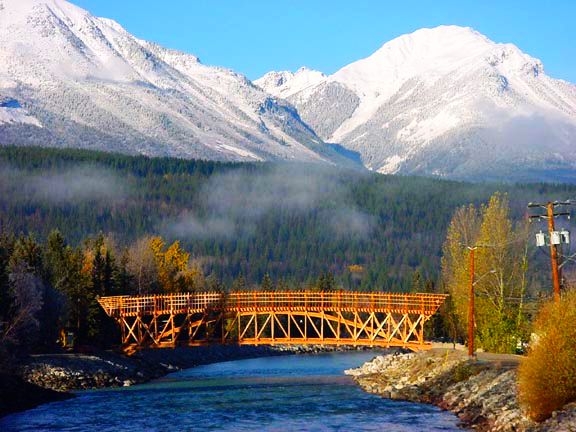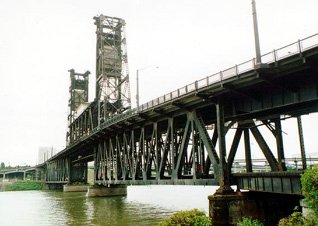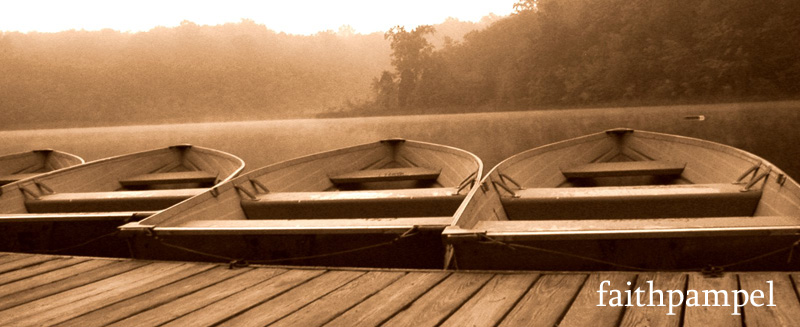Some costs of bridge building
The United States is one of the most developed and most populated nations in the world. Nonetheless, expansive transportation networks bear great significance in the nation’s social, economical and political spheres. Since the unfurling of the Industrial Revolution in the 18th and 19th centuries, the country has witnessed rapid spread of civilization and, consequently, the rapid development of an infrastructure of roads and connections. The United States’ increasing population size necessitates continual construction and improvements to our transportation systems. The Interstate Highway System has only been established within the past half-century (1). An essential technology for the growth of our transportation web has been the construction of bridges. Bridges help connect powerful domains of American civilization by overcoming natural barriers that once hindered expansive travel. Furthermore, our nation’s “networks of roads and bridges are [so] essential for transportation, communication, defense and trade that they are central to the physical and conceptual construction of nationhood” (2). Although an integral part of American society, bridges can have adverse effects on the environment.
Bridges often subject the areas over which they cross to the effect shading. By greatly reducing the amount of sunlight in the area, towering bridges can restrict the growth of vegetation. In turn, the productivity of a whole ecological system can suffer, as the loss of primary producers may affect the entire food web in an ecological community (3). If the primary consumers of native plant species experience a decrease in their primary food (energy) source, they may then suffer a decrease in fitness or reproductive success. As a result, these consumer species may emigrate out of the area or become endangered.

Loss of species richness can then have an effect on human welfare. For instance, one of the most common barriers which bridges cross over are wetlands, or other bodies of water. Wetlands are some of the most sensitive types of wildlife habitats, as they provide habitats for a multitude of species. Humans commonly exploit many inhabitants of wetlands, such as fish, so their loss can have adverse effects on the human economy.
In terrestrial areas, the shading effect can be detrimental to the soil. A decline in plant species induces a loss of root material, leading to soil erosion. Soil nitrogen levels may also decrease and further limit successful plant growth.
Regardless of how useful they may be for human transportation, the physical structures of bridges themselves, and not just their shadows, can degrade ecological communities. Many bridges are preserved by coatings of metallic and chemical paints that are oftentimes released into natural surrounding areas. Steel bridges, which were mostly constructed during the period between 1950 and 1980, were almost all coated with paints containing toxic lead and chromate as a means to protect the bridge from corrosion. At this point in time, these steel bridges are in a state of deterioration and hence release hazardous pigments into the environment (1). Timber bridges, too, are often treated with metallic and chemical preservatives such as chromate copper arsenate type C, pentachlorophenol, or creosote (4). One hypothesis concerning how these timber treatment substances are released into the environment proposes that heat from the sun may cause some of the substance to blister out from the bridge’s wooden surface, pop, and be emitted from the bridge. These substances have often been found to contaminate the sediment downstream from the timber bridges which they protect. While one study conducted by Kenneth M. Brooks did not suggest that wood treatments are detrimentally toxic to wildlife in the area, his study sites were many in areas with a low volume of vehicular traffic (4). The ecological disturbance caused by bridges is often dependent on the magnitude of the bridge, and hence the volume of traffic in the area, and, in the case of water-crossing bridges, the nature of the water over which they pass.

In areas where the urban sprawl has invited heavy vehicular traffic, degradation to the environment may be most impactful. “Polycyclic aromatic hydrocarbons (PAHs) are released from many sources, including asphalt, lubricating oils, and gasoline or diesel engine exhaust” (4). These contaminants can run off the roads and have greatly negative effects on wildlife survival, especially in sensitive aquatic environments as mentioned above.
Sources
(1) Kogler Jr., Robert A. and Chong, Shuang-Ling. Steel bridge coatings research. <http:/www.tfhrc.gov/pubrds/july97/brdgct.htm>.
(2) Dreicer, Gregory K. 2000. Building myths: The ‘evolution’ from wood to iron in the construction of bridges and nations. Persepcta. 31.
(3) Struck, Scott D., Craft, Christopher B., Broome, Stephen W., Sanclements, Michael D., and Sacco, John N. 2004. Effects of bridge shading on estuarine marsh benthic invertebrate community structure and fucntion. Environmental Management. 34: 1.
(4) Brooks, Kenneth M. 2000. Assessment of the environmental effects associate with wooden bridges prserved with creosote, pentachlorophenol, or chromate copper arsenate. United State Department of Agriculture Forest Service: Forest Products Laboratory.



